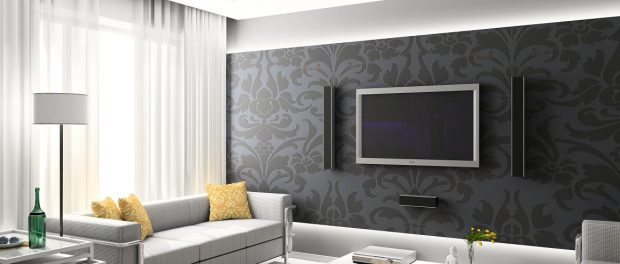Building a Theme: The Basics for the Novice Homeowner

Summary: Interior design focuses on strategically placing the right pieces within the right setting to not only conform to the design itself, but to also strengthen its overall visual prosperity.
 The modern décor of a home revolves around a keen balance of both style and elegance.
The modern décor of a home revolves around a keen balance of both style and elegance.
Although some might take on the more “traditional” approach, so to speak, you always want to find a balance within your design.
For instance, a Victorian design incorporates a wide array of decorative trims, towers and turrets, and large bay windows – commonly topped with stained glass panels. Additionally, these houses utilize an asymmetrical design to embody a framework that’s been around for generations.
“Breaking Tradition”
Now, it’s likely that you’ll look to spruce up your home with an assortment of furniture pieces and interior/exterior improvements. But, before you put on that hard hat and get to work, ask yourself this: are you sticking with a specific theme?
If you are, the first thing you’ll want to do is hop on the Internet and perform some thorough research. Look at the different styles and find what suits your preference. Whether you’re going for that sleek modern look or something more grandiose and culturally-driven as seen in Spanish homes, you’ll want to focus your efforts on complimenting that single theme.
Tunnel Vision
Ultimately, what this means is laying down a foundation for your theme – for the sake of the example, let’s say modern – and building around it. Now, modern homes tend to break away from the standard design that encompasses urban households. With minimalism being the primary emphasis, you’d likely stay away from bombarding your interior with a plethora of furniture pieces and vibrant replacement cushions and throw pillows. Rather, you’d stick to a setting that strengthens the overall “minimalist approach” and add pieces that fit comfortably within the home.
The Foam Factory carries an assortment of high quality foam products that fit any style of household. For more information, visit them online today.
One effective way of taking on interior design is to draw out a diagram that embodies the area that you’re planning to work on. This way, you can easily jot down what goes where and how it all fits together. Alternatively, you can take your ideas to an interior designer and have him or her sketch out a rough drawing of the setting. Keep in mind not to jump into the process. It takes time and a significant amount of effort, but the results are well worth it in the long run. You’ll not only transform your home into a gorgeous sight to see, but you’ll also bring out that untapped creative potential that you’ve hidden away for so long.
